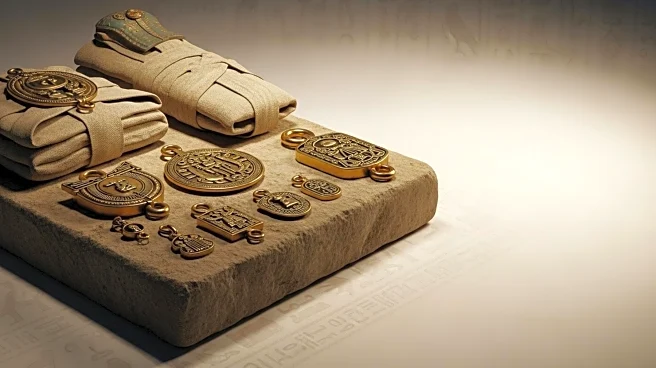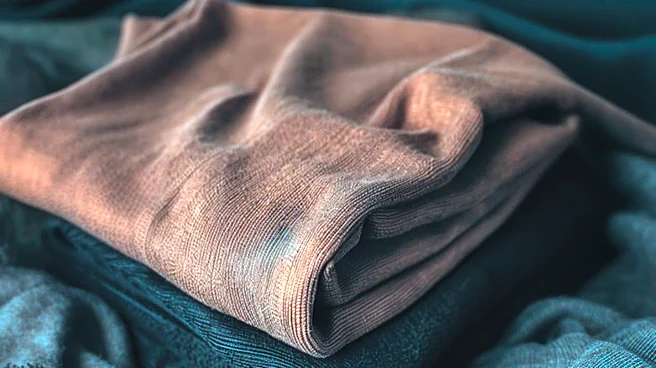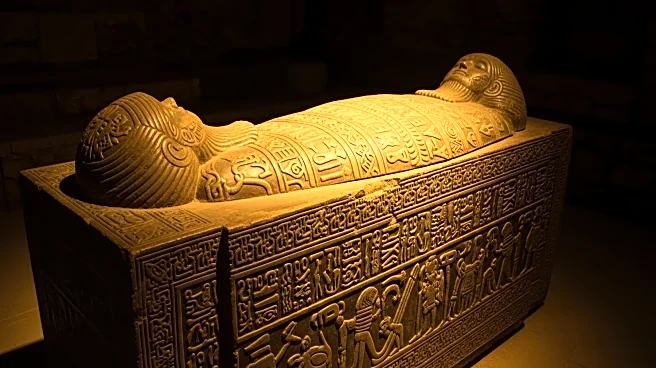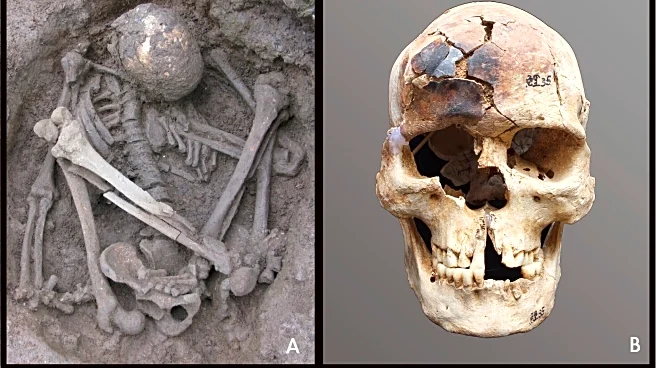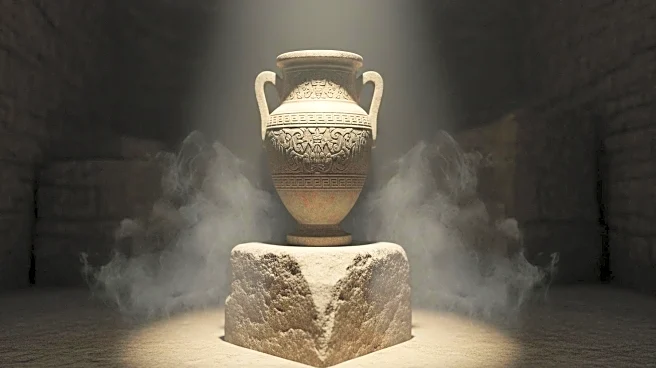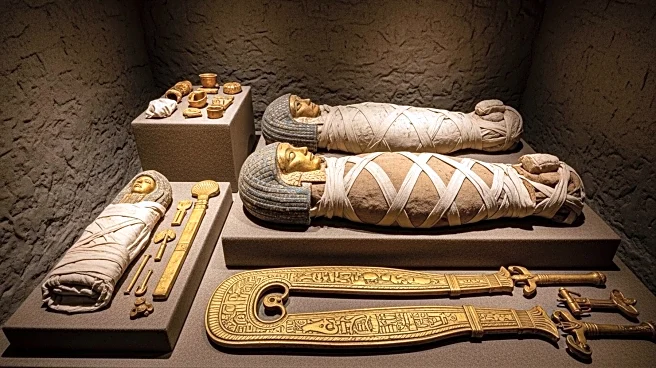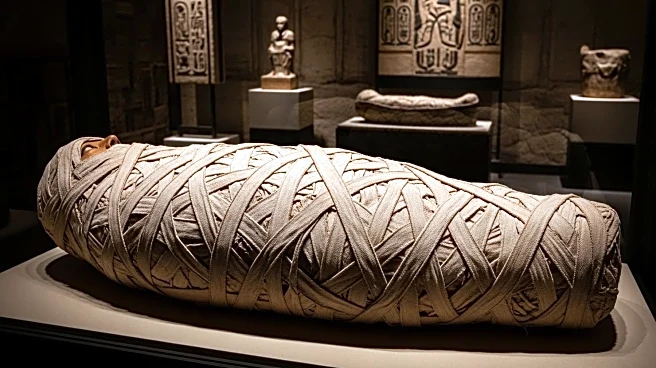What is the story about?
What's Happening?
Archaeologists have discovered evidence of the earliest known human mummification practices in Southeast Asia and southern China, dating back between 12,000 and 4,000 years ago. This predates the well-known mummification practices of ancient Egypt by thousands of years. The study, published in the Proceedings of the National Academy of Sciences, reveals that hunter-gatherer societies used smoke-drying techniques to preserve their dead. These findings were based on the analysis of burial sites where bodies were found in tightly crouched postures with traces of burning, indicating that the bodies were dried and preserved before burial. The research team examined bone samples from 95 archaeological sites, using X-ray diffraction and infrared spectroscopy to confirm exposure to heat.
Why It's Important?
This discovery significantly alters the timeline of human mummification practices, suggesting that complex mortuary traditions existed among hunter-gatherer societies much earlier than previously thought. The findings highlight the cultural and technological sophistication of these ancient societies, which had developed methods to preserve the dead in humid environments. This challenges the traditional view that mummification was primarily an Egyptian innovation and suggests a broader, more ancient tradition of body preservation. The study also provides insights into the cultural beliefs and practices of these early societies, reflecting a deep-seated human desire to maintain connections with the deceased.
AI Generated Content
Do you find this article useful?
